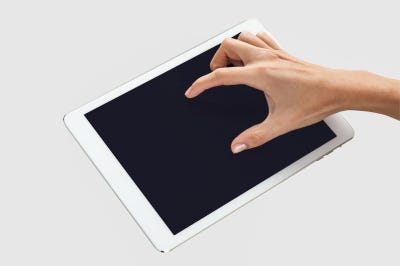4 Reasons Your Device's GUI Won't Cut It - pg.2
May 15, 2014
1.) You Underestimate the Time to Build a Good GUI
Many device makers are underestimating the time it takes to build a good GUI. “Prior to the last 18 months or two years, many companies had a device that didn't have a display or they had a segmented LED display,” Juran says. “Now they have a graphical display and they assume 'I'll do what I did before and add some GUI components and that's going to take a month or two.' [Device companies] have to understand GUI is a critical part of the device.
2.) You aren't thinking of aesthetics
 “[Device companies] don't take into account the value of aesthetics and how that reflects on quality perception,” Juran says. “I need to have a good looking UI and for people to feel comfortable with the quality of the device itself.”
“[Device companies] don't take into account the value of aesthetics and how that reflects on quality perception,” Juran says. “I need to have a good looking UI and for people to feel comfortable with the quality of the device itself.”
He uses the automobile industry as an example. If you've gotten into a new car recently you've probably been struck by how behind the times the dashboard's GUI looked. “It took [the car] five years to get to market and you look at [the GUI] and its dated, but just really came out this year,” Juran says.
With development time and the regulatory pathway, medical devices can have this same problem. “By the time my UI hits the market it's already four years out of date – unless you've got a really smart, forward-looking, timeless, classic design,” Juran says.
When working with their client Tandem Diabetes Care, T:Slim, makers of the award-winning T:Slim insulin pump, Juran says Altia started with a blank slate. “They looked at everything that existed and focused on the same thing as them.” The problem is in balancing usability with a tasteful aesthetic that will make patients feel comfortable.
“Today, [consumers] are more and more savvy but also more and more demanding. A 14-year-old girl is not going to wear an insulin pump that looks like a 1920s oscilloscope,” Juran says. “ You have to balance all three of those into something that's simple, it still should be well a designed, beautiful UI that matches the look and feel of the device.”
The balancing act is in trying to find standards but not overdoing it for the sake of compromising the brand.
And templates won't do. The device market is too specific and customers aren't demanding it. “The devices are very custom and specialized. Brand image plays a part of this, manufacturers want the GUI to be customized,” Juran says.
The MD&M East Conference will be hosting sessions on "Designing Next-Gen Medical Devices" on June 9, 2014 |
[photo credit: Freedigitalphotos.net user: stockimages]
You May Also Like


